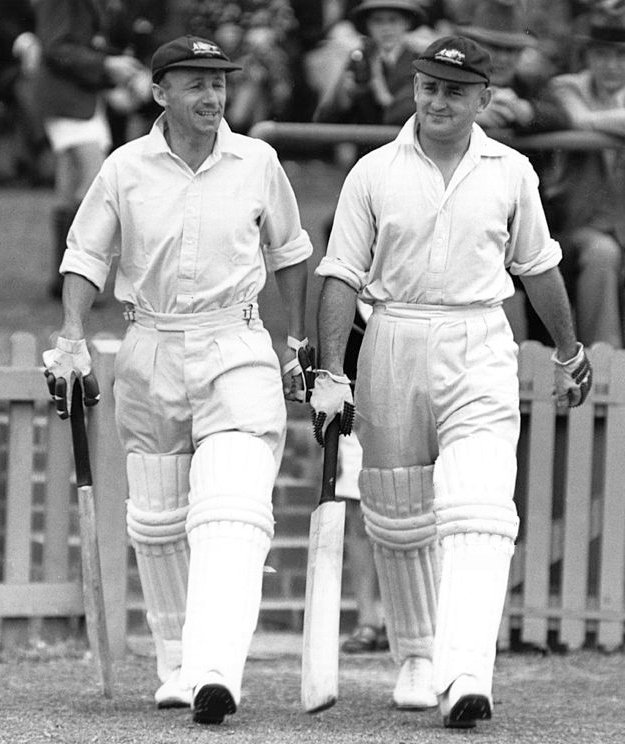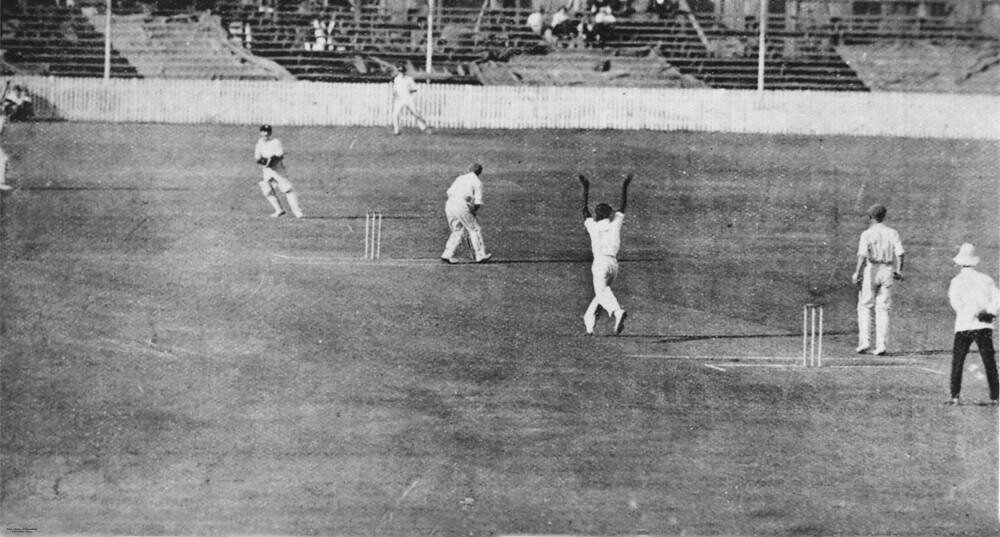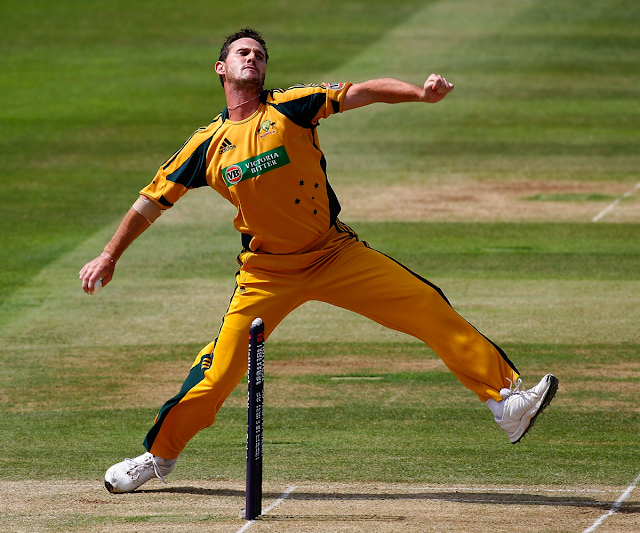Richie Benaud, the Australian leg spinner displayed flair in everything he did. Whether it was aggressive batting, intelligent and varied leg-spin, brilliant close catching, instinctive and positive captaincy. Even though insightful TV commentary, which is probably what most people, too young to have seen him play for Australia, know him for.
Richie Benaud born on 6 October 1930 at Penrith New South Wales in a cricketing family. His younger brother John Benaud played 3 Test for Australia from 1972-73 to 1973-74. His father Louis, was a leg spinner, playing grade cricket in Australia. Richie was mostly inspired by his father's leg-spin abilities. He has been famous for more than 60 years and what underpinned everything with him throughout that time was a deep love and understanding of the game.
If he was to be remembered for just one thing, it perhaps ought to be leadership. Richie Benaud more than anyone led Australian cricket out of the doldrums in the late 1950s. His all-round cricket before he formally took over the national captaincy in 1958. He, along with his opposite number Sir Frank Worrell, did a great deal to revive general interest in Test cricket in a bold way. They conducted what turned into a truly epic series between Australia and West Indies in 1960–61.
That famous series started with the celebrated tied Test in Brisbane in which Benaud’s run-out for 52 with seven runs needed proved a major turning point during the game’s climax. Tactically he was razor-sharp, while never losing sight of the fact that a captain could realistically. The only hope to control so much of what happened during a game spanning several days and many hours. One of his most famous sayings was! “Captaincy is 90 percent luck and 10 percent skill. But don’t try it without the 10 percent.”
He certainly had that 10 percent and, like Mike Brearley, appeared to possess the uncanny knock of creating his own good fortune. Probably by being so good at anticipating what might happen next. If conjuring victory from defeat in the 1981 Ashes was Brearley’s defining achievement. Richie Benaud finest hour was a not dissimilar Houdini-like act at Old Trafford 20 years earlier, only a few months after the historic contests with Worrell’s team.
Then, with the series standing 1–1 after three matches and England 150 for one needing only a further 106 to take a 2–1 lead. He chose to forget that he was handicapped by a shoulder injury and, operating from round the wicket and into the rough. The bowled his country to unbelievable victory with a spell of five for 12 from 25 balls, thereby retaining the Ashes. If Brearley can claim to be England’s finest captain of all time, the same status might be accorded Benaud among Australian leaders.
He was inspired to bowl leg-spin by watching Clarrie Grimmett. Richie Benaud first played for New South Wales at the age of 18 and for Australia at 21. However, it took him time to fulfil his talents at the highest level. He smashed a maiden Test hundred in just 78 minutes at Jamaica in 1955. Where circumstances were extremely hard for the most taxing – six other centuries were scored in the same game – and it took him 25 matches to record his first five-for.
Richie also tasted a fair bit of defeat in his early years, finishing on the losing side to England in three straight Ashes series. English conditions were hardly conducive to leg-spin and he made a little impression with the ball on the 1953 and 1956 tours. Therefore, even accounting for his Manchester triumph in 1961 his Test wickets in England cost almost 40 apiece). Which is fairly high for his caliber? His best bowling analysis was 7 for 56 against India at Madras (now Chennai) in 1955-56.
Then things clicked on a tour of the subcontinent that followed straight on from the 1956 tour. Australia lost to Pakistan on a matting wicket in Karachi but Benaud then proved the decisive player with 23 wickets in three Tests in India in a series Australia won 2–0. A year later he produced what ranks among the finest all-round performances of all time in South Africa, where in five matches he scored 329 runs and took 31 wickets.
Only two other players – George Giffen and Ian Botham – have ever scored 300 runs and taken 30 wickets in the same series. Australia won that series 3–0. Moreover on the tour Benaud’s return in all first-class matches was a stupendous 817 runs and 106 wickets. When Ian Craig fell ill, Benaud was the natural choice to take over the captaincy against England in 1958–59. He took to the promotion effortlessly.
England was trounced 4–0 and if the methods of Benaud’s pace attack was questioned. This was at the height of the ‘throwing’ controversy – his own bowling was beyond reproach and he was leading wicket-taker on either side with 31 at 18.83. A year later Australia toured Pakistan and India again and this time won both series and Benaud was again the star with 47 wickets in the eight Tests at and a marvelous average of 20.19.
Then came the stubborn victories, both by 2–1 margin, over West Indies and England. With his shoulder problem causing him increasing difficulty. Because his effectiveness as a bowler began to diminish but he nevertheless retained the Ashes at home in 1962–63 with a 1–1 draw. He played one more series, at home to South Africa in 1963–64. Because initially as captain but then under Bob Simpson, before retiring from all cricket at the age of just 33. In fact, Benaud has left two- or three-years cricket to make his records more impressive.
If that was sad, the story of the second, triumphant phase of his Australia career was not. During it, he averaged five more points with the bat than he had earlier, and nine points fewer with the ball, while Australia won 19 Tests and lost only five. At the time of his retirement, Benaud had taken 248 wickets in 63 Tests Matches with the best of 7 for 72 and taking five wickets on 16 times and one time to grab 10 wickets in a match. As a mini all-rounder, he scored 2,201 runs at 24.45 with the highest score of 122 against South Africa at Johannesburg in 1957-58. Indeed, more than anyone else for Australia up to that point and second only to Fred Trueman among all nations.
He had also captured a record 266 wickets for New South Wales. And overall, he had a whole bag of tricks – googlies, flippers and top-spinners, countless variations in flight – and was very accurate by the standards of his breed. My entire experience of Richie is of him as a broadcaster, first listening to him and then, behind the microphone, working alongside him in the commentary box for Channel Nine and the BBC. He was indeed the guru of cricket commentary.
His selection of words and manner of delivery were always pitch-perfect. To a novice such he was generous of spirit, always happy to talk and pass on advice. It is easy in our business to fire from the hip but one of his great aphorisms is ‘Engage brain first before speaking’ and he was always very careful to avoid making sweeping statements about issues that might develop and force some revision.
His influence extended into many areas. He was a key adviser to Kerry Packer during World Series Cricket. A groundbreaking venture that was highly controversial at the time but for which all well-remunerated modern cricketers should be thankful. Taking together his contributions on and off the field, he must rank as one of the most significant cricketing figures of all time. Richie Benaud captain for Australia in 28 Test Matches with 12 wins, 4 lost, 1 tie, and 11 draws.
At the age of 84, he diagnosed with skin cancer in 2014. He fought with cancer with brave heart but eventually, he died in his sleep on April 10, 2015. Many great players attended his funeral like Shane Warne, Michael Clarke, Ian Chappell and his close family and friends. Richie Benaud handed the last baggy green cap to Mitchel Starc and Simon Katich. He was, in fact, most influential cricket personality post era of World War II. Many cricketers believe this is the second greatest loss after Don Bradman. His chirping voice will be forever missed by cricket lovers.
Read More

 Don Bradman and Stan McCabe 1938
Don Bradman and Stan McCabe 1938 Eddie Gilbert and Donald Bradman at the Woolloongabba
Eddie Gilbert and Donald Bradman at the Woolloongabba







